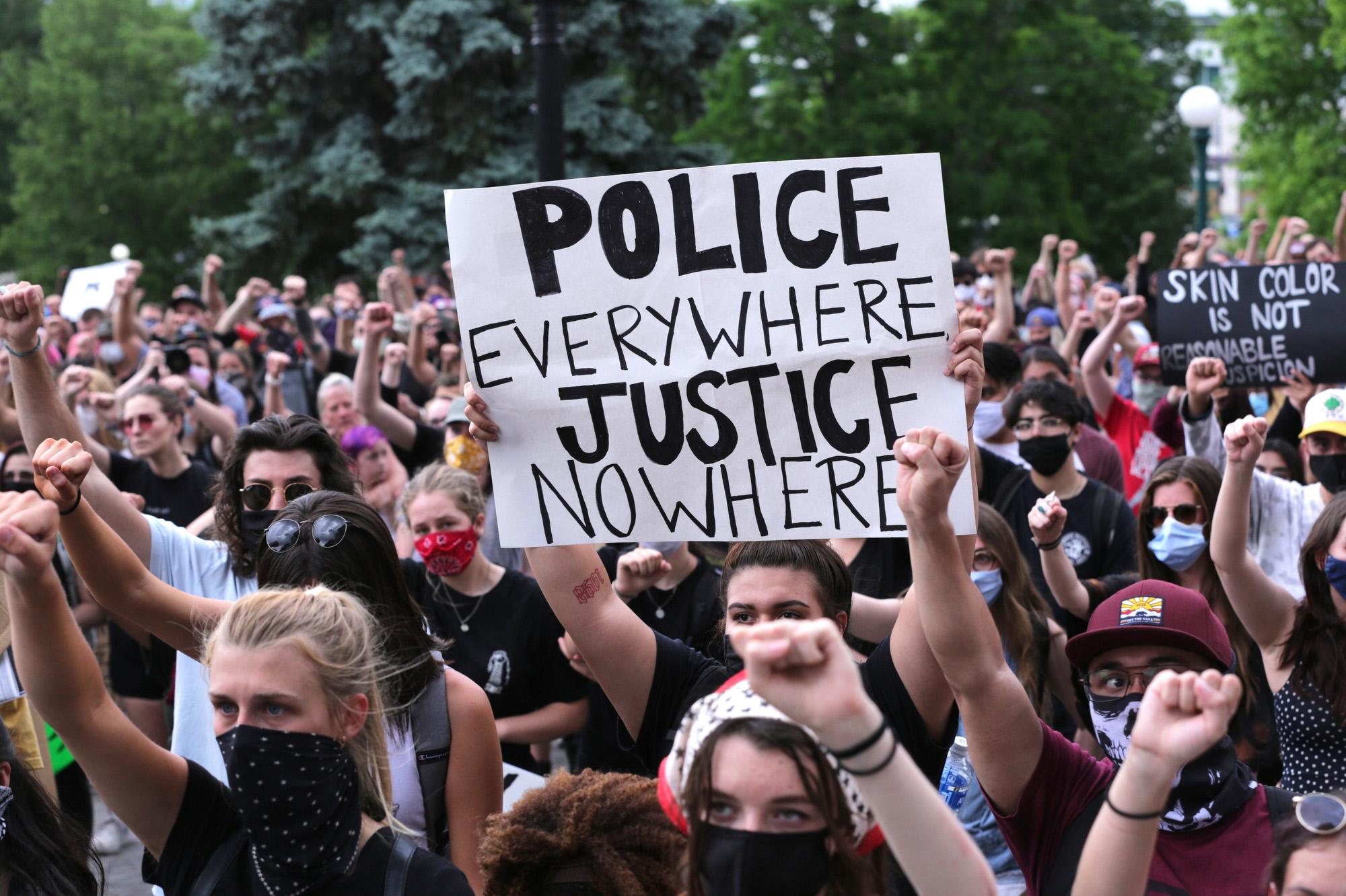
As protests over George Floyd’s murder roiled Denver and the nation five years ago, Colorado lawmakers convened an extraordinary summer session and passed legislation requiring every law enforcement agency to report how frequently they use force against Coloradans.
This, they argued, would finally inform the public which police officers and sheriff’s deputies were the bad actors, which agencies seemingly had the most problems with both the daily use of punches, kicks, tackles, holds and shocks and the use of deadly force.
Five years later, some of Colorado's largest departments say computer problems have prevented their full data from being presented by the state. Other departments just haven’t provided any information and the state has taken no steps to force it.
The result: The state has published only two partial reports and the extent of force used by Colorado agencies against citizens remains unknown.
“Here we are in 2025, and I'm scratching my head going, ‘Why is this so hard?’” said Serena Gonzales-Gutierrez, a sponsor of the police reform bill as a state lawmaker. She’s now a city councilmember in Denver.
As a policymaker, Gonzales-Gutierrez said that without accurate numbers it’s hard to know what has worked with police reform, and where the problems still are.
“You need the data!” she said.

The state has published only two reports. Of those, one covers 2022 incidents, and the data is filled with holes: only 57 percent of agencies participated, and many only offered partial information. Officer weapon type in a table on “weapon discharge status” was listed as “unknown” in 38 percent of incidents.
A second report released late last month, covering 2023, shows only 42 percent of Colorado agencies submitted complete data. Another 28 percent of departments were “non-compliant,” providing three or fewer months of data.
Use-of-force data from Denver and Colorado Springs, which are the biggest agencies in the state and cover more than one million people, is largely not reflected in the two reports. Both departments claimed technical problems prevented their computer from talking to the state’s computer.
“DPD submitted a data dump to the state that could not be merged into their existing tool, so it is not shown on the public database,” according to a statement from a Denver Police spokesperson, who noted that next year’s report, covering 2024 incidents, will finally include Denver’s full use-of-force data compared to other departments.
Until then, a person trying to determine how often Denver officers use force would find three different numbers reflecting incidents involving the state’s largest police department.
The state data shows 132 use-of-force contacts in 2023 (which the state acknowledges only covered December data), but later in the report notes Denver had “use of force on 3,000 citizens.” The city’s own data from their website says there were 844 incidents in 2023.
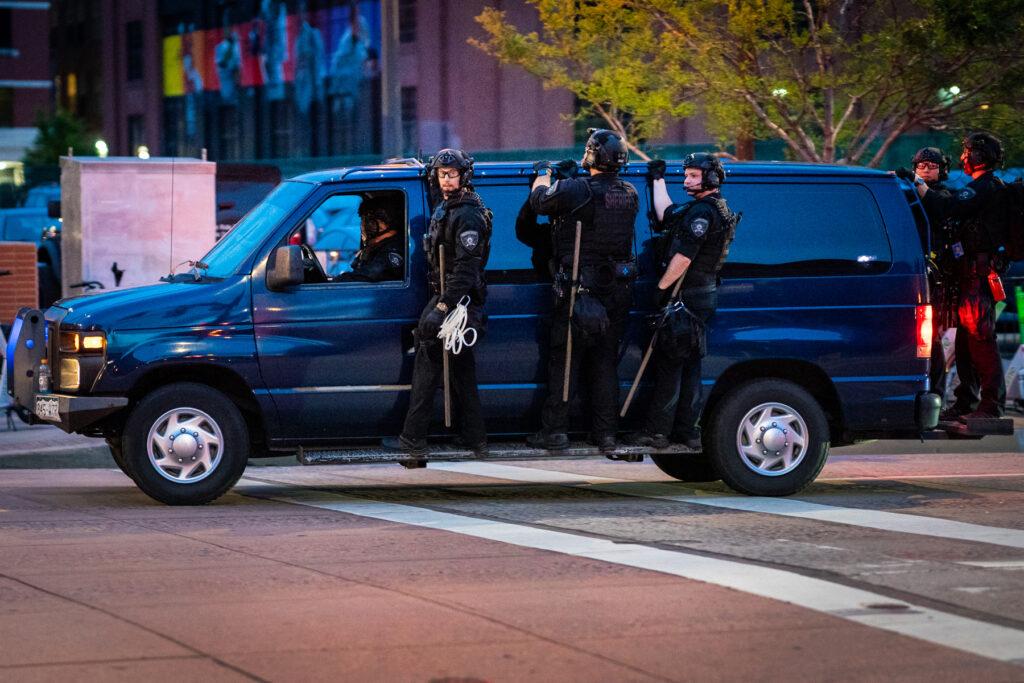
The state’s Division of Criminal Justice refused multiple requests for an interview. Many of the bigger police departments also refused interview requests, preferring to communicate by email.
A spokesperson for the Division of Criminal Justice said in an email statement that, five years in, the data collection is still “in its early stages” and next year’s report will have more agencies participating fully. In the most recent report for 2023, 72 percent of agencies in Colorado submitted at least one month of data on police-civilian contacts and use-of-force, but only 42 percent of agencies submitted all 12 months of data.
The division said that they are mandated by law to build the platform and publish reports, but do not “have statutory authority to compel agencies to submit data in a particular format or adopt uniform definitions. As a result, much of the variation seen in the data is driven by how individual agencies interpret and implement the guidelines provided,” reads the statement.
Put another way, some departments responsible for enforcing the state’s laws aren’t complying with one they don’t like.
Qusair Mohamedbhai, whose Denver law firm has led some of the highest profile lawsuits against law enforcement agencies for excessive force, said he doesn’t get why some sheriffs and chiefs would purposely stick their heads in the sand.
“If law enforcement agencies have the goal of reducing use of force, then the biggest proponents of this data should be the agencies themselves,” he said. “The data provides for trends and it also provides for early warning systems. If there is particular officers, particular areas, particular shifts where use of force is happening more regularly, then this becomes invaluable.”
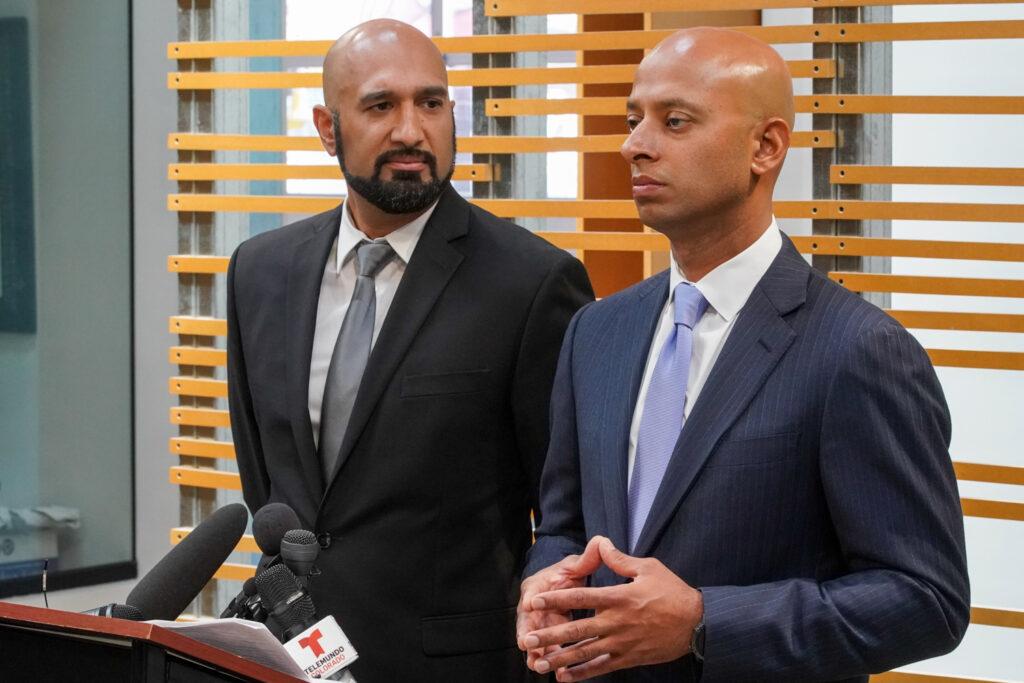
The partial or inaccurate data has led other agencies to wonder what’s going on.
“There’s no way Longmont has more use of force incidents than Denver,” said Jeff Satur, former chief of the Longmont Police Department who retired in the spring. “The departments doing well are reviewing this use of force, they’re looking at the body cams and deciding do we need to focus more on training? Do we need to try different options? They should be analyzing information for us.”
While state officials take pains to explain why Denver’s data is missing in the latest report, they make no mention of why the Colorado Springs Police Department data is not fully reported. Colorado Springs is listed by the state as having only 101 use-of-force contacts in 2023.
Colorado Springs Police say that’s wrong. They refused multiple requests for an interview, but pointed CPR News to their online dashboard that lists 668 use-of-force reports in 2023, not 101, as listed in the most recent state report.
“The data you are referencing are not representative of CSPD officers’ use of force as defined by the data collection law,” a statement from the department said. “We have identified issues with data quality, as well as some confusion about the requirements of the law. We are working to remedy these issues currently.”

Grand Junction Police has no data listed in the state report, a spokesperson for the agency said it finally began reporting to the state’s system in 2024, and their data will be reflected in next year’s report. The Jefferson County Sheriff’s Office also has almost no data listed, a spokesperson said they tried to fix the technical issues without success, and next year’s report should reflect the accurate data.
Monument Police told CPR News they had two use of force incidents in 2023, not zero, as reported by the state. “I can't explain why they weren't in the [state’s system], but they were documented in our internal system,” said Commander Timothy Johnson.
Rocky Ford Police have a new chief who started in April. He couldn’t explain why the department wasn’t reporting in the past, but he said they are now.
Some departments, like Aurora and Westminster and Commerce City, say they took lawmakers’ wishes seriously from the start and have consistently reported data to the state.
That means, perception-wise, they’re getting punished: It appears that those departments have officer force incidents far outside the norm.
“So when I look at some of the numbers that are reported it seems clear to me there's some under-reporting going on,” said Darrel Guadnola, chief of police in Commerce City.
Guadnola said he wasn’t trying to “throw stones” at any other departments, but he added that the numbers aren’t adding up.
Samantha Spitz, a spokeswoman for the Westminster Police Department, said she believes the agency is fully complying with the law.
She noted the way the state tracks the data could produce inflated numbers because each officer on a scene where force is used must fill out a separate report so there could be multiple officers reporting the same force for a single incident.
“We can’t comment on how other agencies report use of force and how (the state) displays the data,” she said.
The Division of Criminal Justice data indicates that Aurora and Westminster, have the highest total counts of use-of-force. At the same time, the state acknowledges comparisons are not possible with so many omissions by the state’s agencies.
“Agencies with higher counts and rates of use of force might reflect more accurate reporting of use of force incidents as opposed to higher prevalence of force used in these agencies,” reads the state’s 2023 data report.
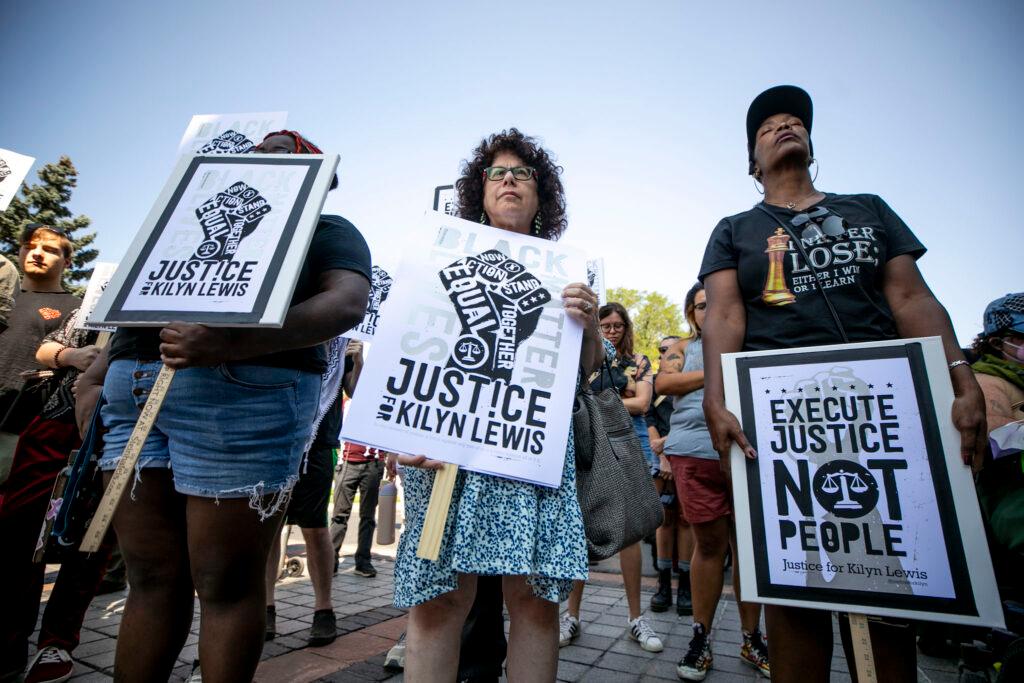
Aurora Police, which is under a state-imposed consent decree requiring them to work with an independent monitor to reduce police violence, declined to make anyone available for an interview. Through a statement, the agency said they were proud of their reporting.
“The Aurora Police Department prides itself on being transparent with the city of Aurora community with the timely and accurate release of important information,” reads an email statement from a spokesperson for APD.
How do they define force?
There are two broad categories of force: lethal, or sufficient to cause death, and less-than-lethal. Within each of those broad categories are multiple lawful tactics, ranging from gunshots down to grabbing.
Deadly force may only be used when an officer reasonably believes the action is in defense of any human life. An officer may use deadly force to stop a fleeing subject when the officer has probable cause to believe that the individual is about to commit a felony involving serious bodily injury or death.
Most agencies require a use of force report to supervisors if officers cause a visible injury, the suspect experienced more than “momentary discomfort,” or if the suspect complains of injury or continuing pain, according to a review of agencies’ policies. If an individual is pushed, shoved, struck, kicked or taken to the ground, that is also considered a use of force.
Some agencies also require a report if the person indicates an intent to pursue litigation. Additionally, officers are required to report force if they use a TASER, restraint — other than handcuffs or shackles — or if any force rendered a person unconscious.
Officers are required to report force when there is any use of any weapon — even if it wasn’t used, just unholstered.
Despite these seemingly clear guidelines, law enforcement heads say there is subjectivity.
“Everyone is going to track it a little differently,” Satur, the former Longmont Police chief, said. “That’s the problem.”
Another problem, even if the goals of transparency are there, is that no one seems to know what a good benchmark is to see if an agency is overdoing it.
Would it be helpful to compare use of force numbers to the number of citizens an agency is policing? The number of arrests? The rate of violent crime?
Chuck Wexler, the head of the Police Executive Research Forum, a D.C. based think tank run by former law enforcement officers trying to improve policing said the question is important — and he doesn’t know the answer.
Wexler urged departments to know their own work.
“This is the kind of situation where departments need to analyze their own data. They need to look at it in different ways. Is more force being used in one area than another? Are certain individuals using more force than others? Are certain individuals using electronic control weapons more often than others?” Wexler said. “Is someone using a TASER indiscriminately? Policy matters, supervision matters, analyzing data matters.”
Satur said when he led Longmont’s police department, he looked at the use of force data as a measure for how they’re doing and where they may need more training. He often looked at force data compared to complaints from citizens.
“Most officers get people to surrender and put their hands up just by asking. We’d like the suspect to just turn around, put their hands behind their back,” Satur said.
Protest and swift action
Data collection was a key piece of Colorado’s police reform bill. While other provisions were controversial, there was little debate that data on use-of-force would be important for the public and lawmakers as they undertake significant changes to policing.
The bill moved through the legislature with extraordinary speed. George Floyd was killed on May 25. By June 4, when lawmakers convened in a committee room to hear Senate Bill 217 for the first time, protests had ringed the Capitol building for more than a week.
“It’s been nine days, 10 days that we've had protesters circling and we can hear their voices. They're asking us to take action,” said State Sen. Rhonda Fields, a prime sponsor of the bill. “This is not just a local issue as it relates to the state of Colorado, it's a national issue, this has gone global and it's calling us to do something different we can no longer maintain the status quo.”
Inspired by the chants outside, the bill was signed by Gov. Jared Polis just 16 days after it was introduced.
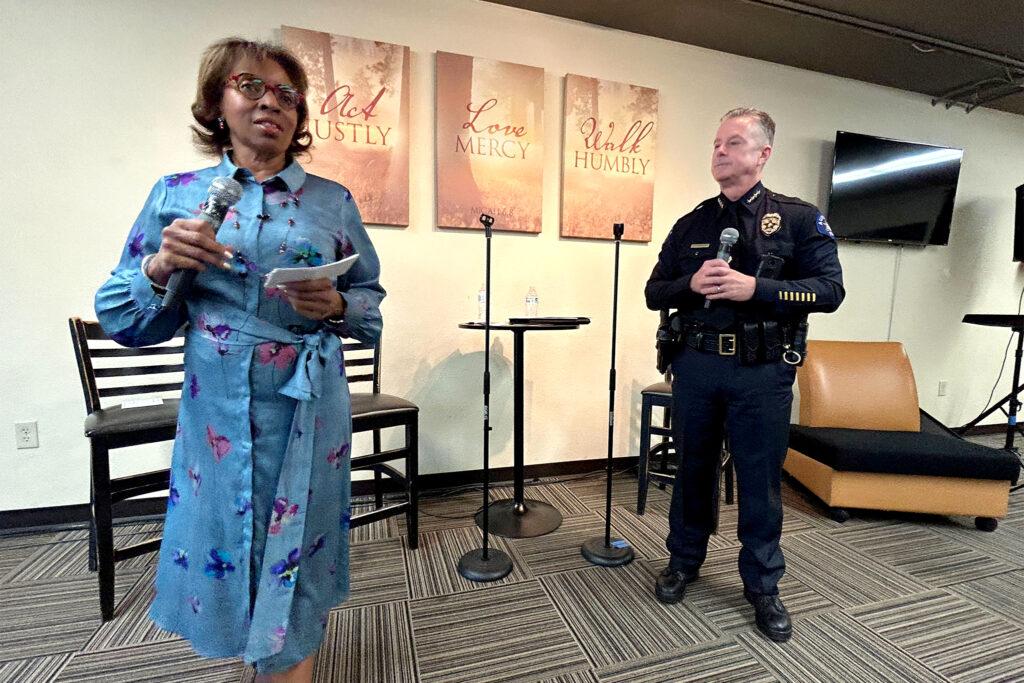
Five years later, the Division of Criminal Justice, in statements to CPR News, said that there is growing compliance with use-of-force reporting. The agency said implementing any entirely new reporting system for Colorado’s nearly 300 law enforcement agencies is a difficult undertaking.
In the 2020 police reform law there is a provision that “any local law enforcement agency that fails to meet its reporting requirements pursuant to this section is subject to the suspension of its funding by its appropriating authority.”
It’s not clear practically how that would work, since the state provides little funding to local police departments.
But that could change: last November voters approved Proposition 130 which sets aside $350 million in grants from the state to local law enforcement
Former state representative and current Denver city councilmember Gonzales-Gutierrez said that would provide a powerful incentive to report data to the state. “I wonder if there's a way to leverage that” to get departments to fully participate, she said.
Building trust after violence
And for people on the receiving end of forceful policing, even wrongfully so, they say transparency — both from the state and the agencies — would be helpful in building trust.
In 2023, Elijah Smith was living in California but was in Denver celebrating a buddy’s birthday on the night of the Nuggets championship game. When they left a club, Smith saw a guy hit his friend in the crowd swelling from the excitement of the victory.
He ran over to help and admitted that he punched the guy back a couple of times. Then, he said he felt his body fly into the air and he fell to the ground. He was unconscious for a bit but when regained consciousness, his head throbbed and he figured it was all part of the fight.
He later learned he was picked up by a Denver police officer and body- slammed, head first, to the ground. He suffered a severe head injury, a brain bleed and nerve damage, according to the lawsuit he filed against the police department.
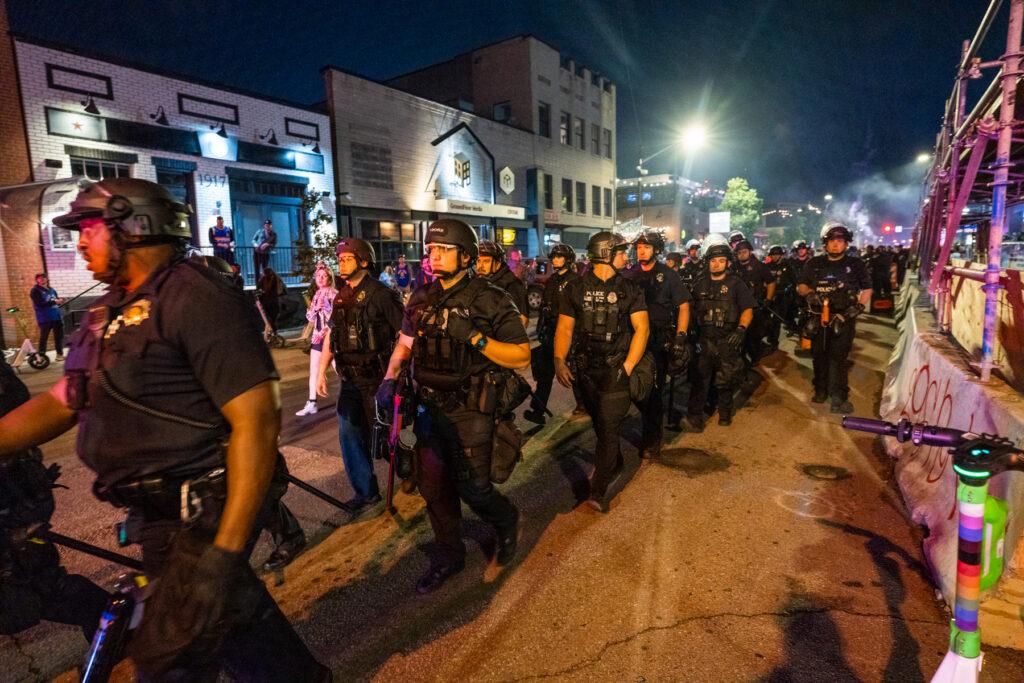
Smith’s incident is not included among the 132 uses of force DPD reported to the state for 2023, even though he received a settlement in the case and the officer was convicted of a misdemeanor and eventually stripped of his peace officer license. That means he can no longer be an officer in Colorado.
Today, making sure what happened to him doesn’t happen to others is important to Smith.
“I know they’re not all the same, going through that and almost losing my life made me rethink a lot of things,” said Smith, who now lives in South Carolina. “Proper training, non-lethal options and transparency will help civilians and officers. And it will help build trust between the officers and the community they police.”









